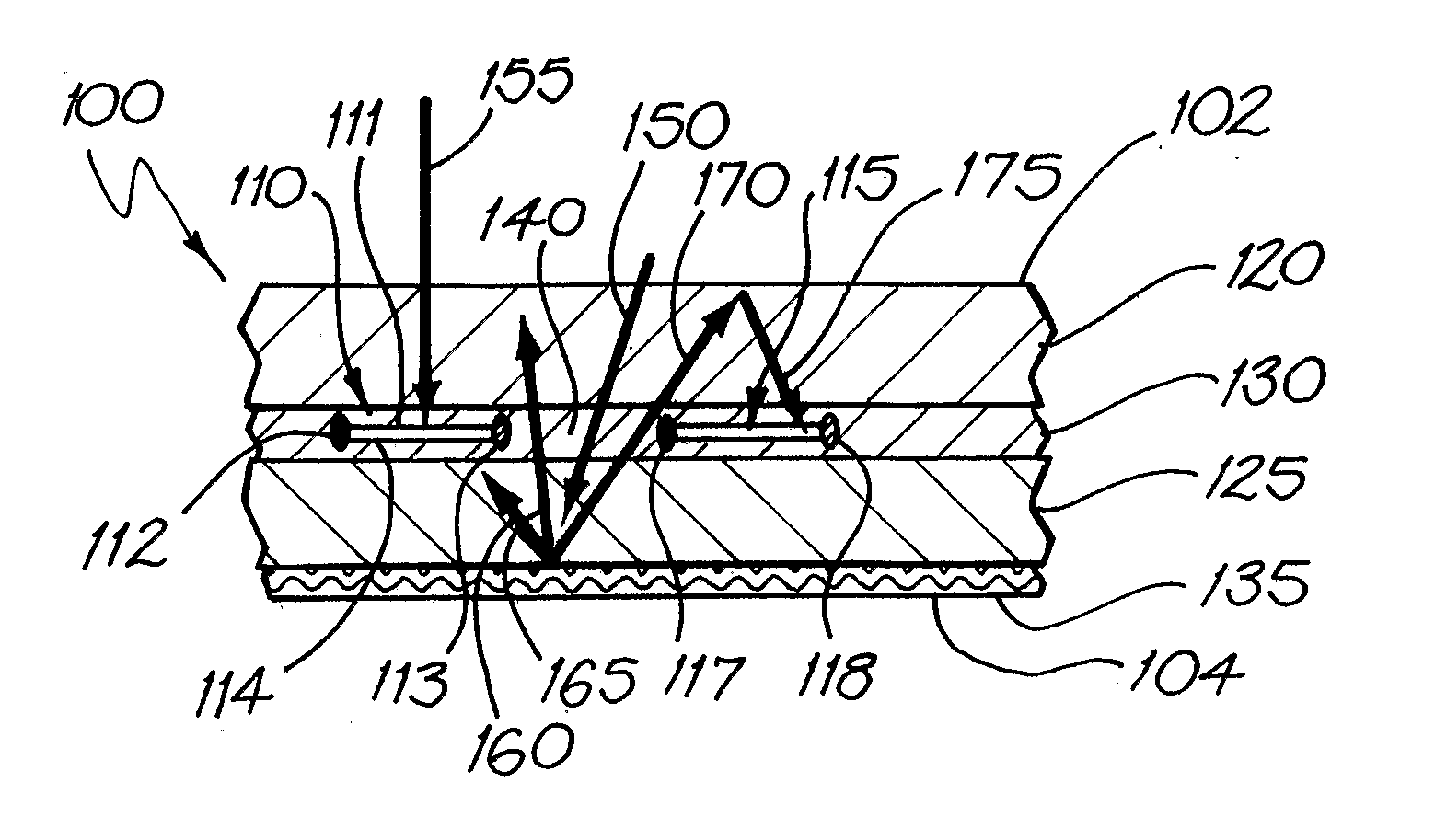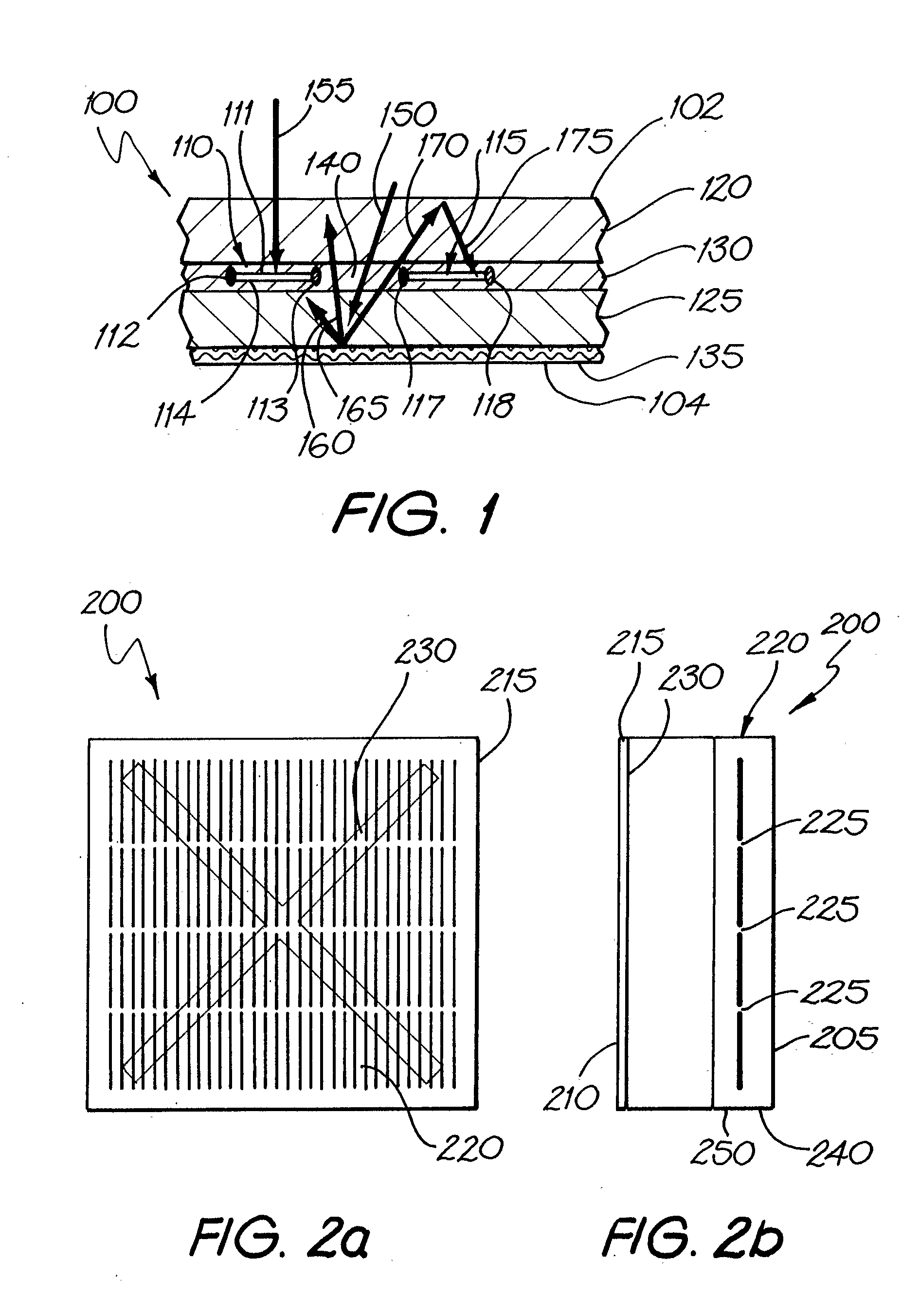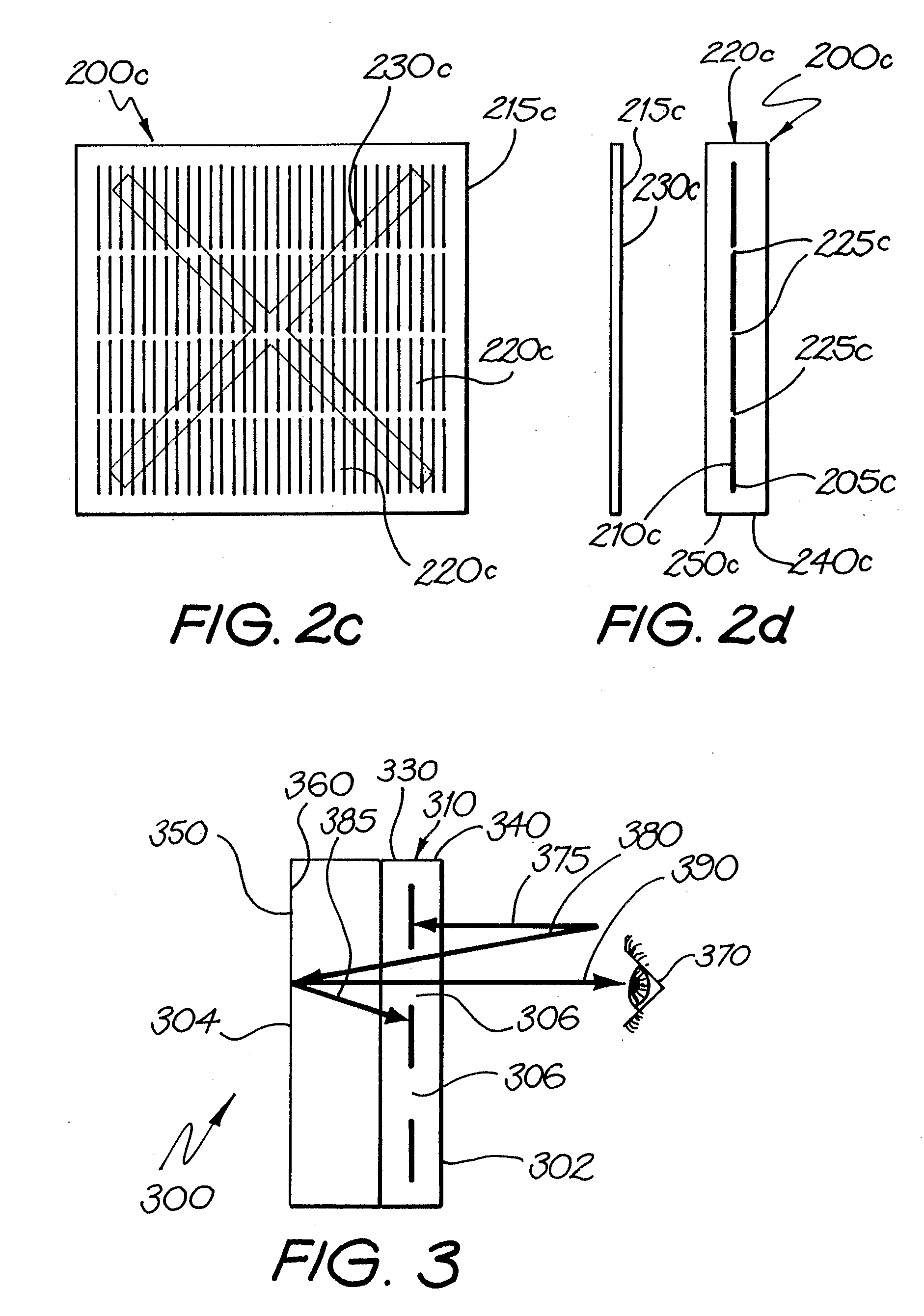Solar Panel
a solar panel and panel technology, applied in the field of solar panels, can solve problems such as dark and unattractive to the ey
- Summary
- Abstract
- Description
- Claims
- Application Information
AI Technical Summary
Benefits of technology
Problems solved by technology
Method used
Image
Examples
example
[0197] A solar panel was constructed with the following specifications: Aperture area 1185 cm22×6 strings of 88 series-connected Sliver® solar cells.
[0198] Each Sliver® cell was 1 mm×57 mm and about 65 micron thick. The Sliver® cells were bi-facial (i.e. capable of collecting light on either side).
[0199] Surface coverage of solar cells was 50%, ie there was a 1 mm gap between each solar cell.
[0200] The solar cells were mounted between two panes of glass, the front pane being about 1 mm thick and the back pane being about 3 mm thick. The cells were encapsulated in an EVA encapsulant. Behind the back pane of glass was located a reflector of coloured paper (“Reflex” copy paper) as specified in Table 1. The logo was a reasonably bright pale poster. There was an air gap between the glass and the paper of about 0.1 mm.
[0201] Results for solar light collection are shown in Table 1.
TABLE 1VocIscnVocnIscnVmpnImpTest(V)(mA)(V)(mA)(V)(mA)Parallel White56.90−382.8158.13−335.9347.14−296.14...
PUM
| Property | Measurement | Unit |
|---|---|---|
| Fraction | aaaaa | aaaaa |
| Transparency | aaaaa | aaaaa |
| Energy | aaaaa | aaaaa |
Abstract
Description
Claims
Application Information
 Login to View More
Login to View More - R&D
- Intellectual Property
- Life Sciences
- Materials
- Tech Scout
- Unparalleled Data Quality
- Higher Quality Content
- 60% Fewer Hallucinations
Browse by: Latest US Patents, China's latest patents, Technical Efficacy Thesaurus, Application Domain, Technology Topic, Popular Technical Reports.
© 2025 PatSnap. All rights reserved.Legal|Privacy policy|Modern Slavery Act Transparency Statement|Sitemap|About US| Contact US: help@patsnap.com



